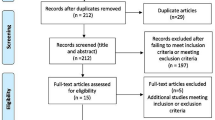Abstract
Despite major technological advancements in robotic-assisted laparoscopic surgery (RAS), there remain shortcomings yet to be addressed. This study assesses the prevalence of suboptimal vision in minimally invasive RAS and corresponding factors regarding related surgical conditions. 45 minimally invasive robotic surgeries, performed using Da Vinci XI, were observed across three surgical subspecialties: general, urology, and OB/GYN. Lens occlusion events were monitored and defined as the presence of a visual distortion caused by debris deposition on the scope lens. Lens occlusions and cleanings, and “active instrumentation” were recorded. Descriptive statistics summarized duration-based variables, and one-factor ANOVA compared the presence of active instrumentation. Cases averaged 127 ± 76 min. Active instrumentation ANOVA during lens occlusions demonstrated significant variation between categories (F7, 256 = 11.63, p = 2.558e-13). Post hoc Tukey HSD found electrocautery devices were active significantly more during occlusion events (37.9%) than other instruments. On average, lens cleaning occurred every 36.5 ± 39.8 min despite lens occlusion occurring every 24.5 ± 15.7 min. Of the operative time observed, 41.4% ± 28.1% was conducted with visual distortion. 1.16% ± 0.97% of time observed was spent cleaning. Although only 1.16% of operative time was spent cleaning, surgeons experienced suboptimal conditions for nearly 35× the time it would take the clear lens, potentially indicating a tendency to avoid cleaning the lens to disrupt surgery. Future research may examine the impact of occluded visualization and lens cleaning on other aspects of surgery.

Similar content being viewed by others
References
Deng W, Liu X, Liu W, Zhang C, Zhou X, Chen L, Guo J, Wang G, Fu B (2021) Functional and oncological outcomes following robot-assisted and laparoscopic radical prostatectomy for localized prostate cancer with a large prostate volume: a retrospective analysis with minimum 2-year follow-ups. Front Oncol 11:3786. https://doi.org/10.3389/FONC.2021.714680/BIBTEX
Secretariat MA (2010) Robotic-assisted minimally invasive surgery for gynecologic and urologic oncology: an evidence-based analysis. Ont Health Technol Assess Ser 10:1
Leitao MM, Malhotra V, Briscoe G, Suidan R, Dholakiya P, Santos K, Jewell EL, Brown CL, Sonoda Y, Abu-Rustum NR, Barakat RR, Gardner GJ (2013) Postoperative pain medication requirements in patients undergoing computer-assisted (“Robotic”) and standard laparoscopic procedures for newly diagnosed endometrial cancer. Ann Surg Oncol 20:3561–3567. https://doi.org/10.1245/S10434-013-3064-9/TABLES/4
Sheetz KH, Claflin J, Dimick JB (2020) Trends in the adoption of robotic surgery for common surgical procedures. JAMA Netw Open 3:e1918911–e1918911. https://doi.org/10.1001/JAMANETWORKOPEN.2019.18911
Robotic Surgery Statistics Show Movement Towards More Minimally Invasive Procedures - iData Research. https://idataresearch.com/robotic-surgery-statistics-show-movement-towards-more-minimally-invasive-procedures/. Accessed 29 Jan 2022
Medical Robotic System Market | 2022 - 27 | Industry Share, Size, Growth - Mordor Intelligence. https://www.mordorintelligence.com/industry-reports/global-medical-robotic-systems-market-industry. Accessed 29 Jan 2022
Johnson & Johnson Announces Agreement to Acquire Auris Health, Inc. | Johnson & Johnson. https://www.jnj.com/johnson-johnson-announces-agreement-to-acquire-auris-health-inc. Accessed 29 Jan 2022
HugoTM RAS System | Robotic-assisted Surgery | Medtronic. https://www.medtronic.com/covidien/en-us/robotic-assisted-surgery/hugo-ras-system.html. Accessed 29 Jan 2022
Maeso S, Reza M, Mayol JA, Blasco JA, Guerra M, Andradas E, Plana MN (2010) Efficacy of the Da Vinci surgical system in abdominal surgery compared with that of laparoscopy: a systematic review and meta-analysis. Ann Surg 252:254–262. https://doi.org/10.1097/SLA.0B013E3181E6239E
(2021) Da Vinci X/Xi Instrument & Accessory Catalog Intuitive Surgical Inc. https://www.intuitive.com/en-us/-/media/ISI/Intuitive/Pdf/xi-x-ina-catalog-no-pricing-us-1052082.pdf
Sutton E, Youssef Y, Meenaghan N, Godinez C, Xiao Y, Lee T, Dexter D, Park A (2010) Gaze disruptions experienced by the laparoscopic operating surgeon. Surg Endosc 24:1240–1244. https://doi.org/10.1007/S00464-009-0753-3
Manning TG, Perera M, Christidis D, Kinnear N, Mcgrath S, O’beirne R, Zotov P, Bolton D, Lawrentschuk N (2017) Visual occlusion during minimally invasive surgery: a contemporary review of methods to reduce laparoscopic and robotic lens fogging and other sources of optical loss. J Endourol 31:327–333. https://doi.org/10.1089/END.2016.0839
Yong N, Grange P, Eldred-Evans D (2016) Impact of laparoscopic lens contamination in operating theaters: a study on the frequency and duration of lens contamination and commonly utilized techniques to maintain clear vision. Surg Laparosc Endosc Percutan Tech 26:286–289. https://doi.org/10.1097/SLE.0000000000000289
Visualization Accessories | Medtronic. https://www.medtronic.com/covidien/en-us/products/visualization-solutions/visualization-accessories.html. Accessed 29 Jan 2022
Funding
The authors declare that no funds, grants, or other support were received during the preparation of this manuscript.
Author information
Authors and Affiliations
Contributions
All authors contributed to the study conception and design. Material preparation, data collection and analysis were performed by JYD, MG and ZJR. The first draft of the manuscript was written by JYD, MG and ZJR and all authors commented on previous and subsequent versions of the manuscript. All authors read and approved the final manuscript.
Corresponding author
Ethics declarations
Conflict of interest
The authors have no relevant financial or non-financial interests to disclose.
Ethical approval
This is an observational study. No ethical approval is required.
Data availability statement
The data that support the findings of this study are available from the corresponding author, CI, upon reasonable request.
Additional information
Publisher's Note
Springer Nature remains neutral with regard to jurisdictional claims in published maps and institutional affiliations.
Rights and permissions
Springer Nature or its licensor (e.g. a society or other partner) holds exclusive rights to this article under a publishing agreement with the author(s) or other rightsholder(s); author self-archiving of the accepted manuscript version of this article is solely governed by the terms of such publishing agreement and applicable law.
About this article
Cite this article
Dae, J.Y., Ginjupalli, M., Rickmeyer, Z. et al. Assessing visualization in robotic-assisted surgery: demystifying a misty lens. J Robotic Surg 17, 915–922 (2023). https://doi.org/10.1007/s11701-022-01485-8
Received:
Accepted:
Published:
Issue Date:
DOI: https://doi.org/10.1007/s11701-022-01485-8




